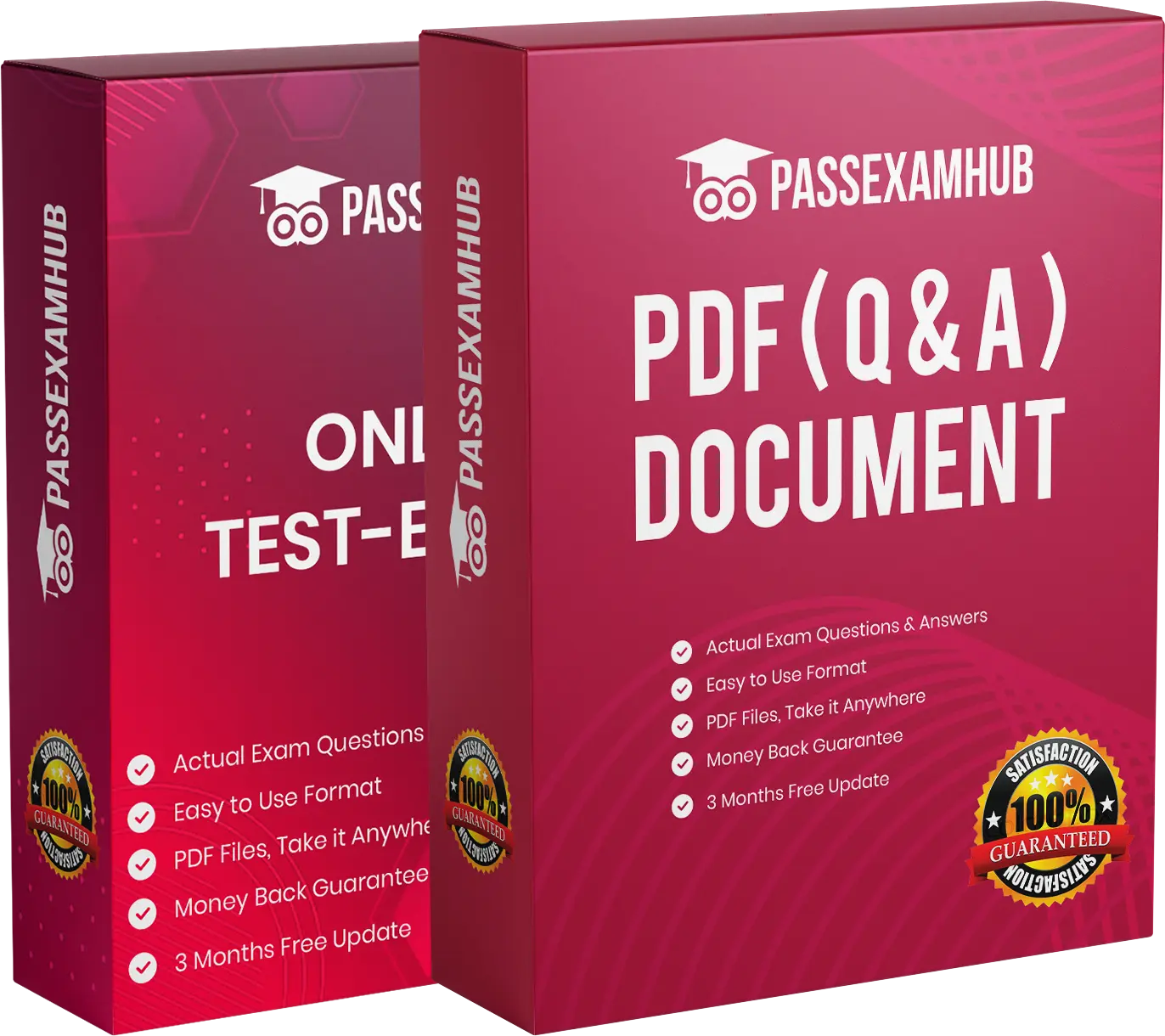
Juniper JN0-649 Exam Dumps
Enterprise Routing and Switching Professional (JNCIP-ENT)
Last Week JN0-649 Exam Results
Customers Passed Juniper JN0-649 Exam
Average Score In Real JN0-649 Exam
Questions came from our JN0-649 dumps.
Choosing the Right Path for Your JN0-649 Exam Preparation
Welcome to PassExamHub's comprehensive study guide for the Enterprise Routing and Switching Professional (JNCIP-ENT) exam. Our JN0-649 dumps is designed to equip you with the knowledge and resources you need to confidently prepare for and succeed in the JN0-649 certification exam.
What Our Juniper JN0-649 Study Material Offers
PassExamHub's JN0-649 dumps PDF is carefully crafted to provide you with a comprehensive and effective learning experience. Our study material includes:
In-depth Content: Our study guide covers all the key concepts, topics, and skills you need to master for the JN0-649 exam. Each topic is explained in a clear and concise manner, making it easy to understand even the most complex concepts.
Online Test Engine: Test your knowledge and build your confidence with a wide range of practice questions that simulate the actual exam format. Our test engine cover every exam objective and provide detailed explanations for both correct and incorrect answers.
Exam Strategies: Get valuable insights into exam-taking strategies, time management, and how to approach different types of questions.
Real-world Scenarios: Gain practical insights into applying your knowledge in real-world scenarios, ensuring you're well-prepared to tackle challenges in your professional career.
Why Choose PassExamHub?
Expertise: Our JN0-649 exam questions answers are developed by experienced Juniper certified professionals who have a deep understanding of the exam objectives and industry best practices.
Comprehensive Coverage: We leave no stone unturned in covering every topic and skill that could appear on the JN0-649 exam, ensuring you're fully prepared.
Engaging Learning: Our content is presented in a user-friendly and engaging format, making your study sessions enjoyable and effective.
Proven Success: Countless students have used our study materials to achieve their JN0-649 certifications and advance their careers.
Start Your Journey Today!
Embark on your journey to Enterprise Routing and Switching Professional (JNCIP-ENT) success with PassExamHub. Our study material is your trusted companion in preparing for the JN0-649 exam and unlocking exciting career opportunities.
Juniper JN0-649 Sample Question Answers
Question # 1You are deploying IP phones in your enterprise networks. When plugged in, the IP phones must be automatically provided with the correct VLAN ID needed for sending voice traffic to the EX Series switches. In this scenario, which two solutions are required to accomplish this task? (Choose two.)
A. Enable LLDP-MED on appropriate access interfaces.
B. Create two VLANs and assign them as VLAN members to the appropriate access
interfaces.
C. Enable the voice VLAN feature with the appropriate access interfaces and VLAN ID for
voice traffic.
D. Use LLDP on appropriate interfaces.
Question # 2
Your network is multihomed to two ISPs. The BGP sessions are established; however, the ISP peers are not receiving any routes. Which two statements are correct about troubleshooting your configuration? (Choose two.)
A. Verify the import policies on your router.
B. Verify that the BGP routes are active in your routing table.
C. Verify the export policies on your router.
D. Verity that the multi hop settings are configured on your router.
Question # 3
BGP multipath or multi hop are not configured in your network. In this scenario, what is the correct sequence for BGP active route selection?
A.
higher local preference
shortest AS path lowest peer address
lowest router ID lower origin code
B.
higher local preference
shortest AS path
lower origin code
lowest router ID
lowest peer address
C.
higher local preference
lowest router ID
lowest peer address
lower origin code
shortest AS path
D.
higher local preference
shortest AS path
lowest router ID
lowest peer address
lower origin code
Question # 4
Which statement is correct about IS-IS?
A. IS-IS uses areas and an autonomous system.
B. Level 1/2 routers automatically inject a default route to the nearest Level 1 router.
C. Level 2 routers must share the same area address.
D. Level 1 routers route traffic between autonomous systems.
Question # 5
Your enterprise network is running BGP VPNs to support multitenancy. Some of the devices with which you peer BGP do not support the VPN NLRI. You must ensure that you do not send BGP VPN routes to the remote peer. Which two configuration steps will satisfy this requirement? (Choose two.)
A. Configure an import policy on the remote peer to reject the routes when they are
received.
B. Configure an export policy on the local BGP peer to reject the VPN routes being sent to
the remote peer.
C. Configure a route reflector for the VPN NLRI.
D. Configure the apply-vpn-export feature on the local BGP peer.
Question # 6
There are two BGP routes to 10.200.200.0/24 received from twoexternal peers. Route 1 comes from a neighbor with a router ID of 10.10.100.1 and a peer IP address of 10.10.30.1, and route 2 comes from a neighbor with a router ID of 10.10.200.1 and a peer IP address of 10.10.50.1. Both routes have the same MED value, origin value, AS path length, and local preference number. In this scenario, which statement is correct about the active route?
A. Route 1 will be active because of the peer IP address.
B. Route 2 will be active because of the peer IP address.
C. Route 1 will be active because of the router ID.
D. Route 2 will be active because of the router ID.
Question # 7
You want to create an OSPF area that only contains intra-area route information in the form of Type 1 and Type 2 LSAs. In this scenario, which area is needed to accomplish this task?
A. totally non-to-stubby area
B. totally stubby area
C. stub area
D. non-to-stubby area




